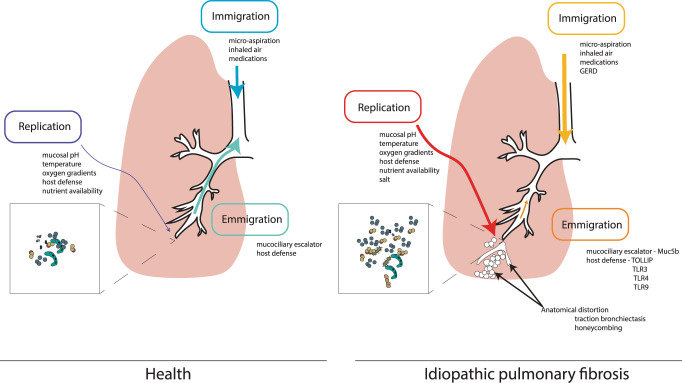Fig. 1.
Ecological pressures on the lung microbiome in idiopathic pulmonary fibrosis. The lung microbiome is determined by relative contributions from microbial immigration, microbial emigration, and microbial replication. In health, immigration and emigration pressures contribute significantly. Factors contributing to immigration include inhaled air and universal microaspiration, and emigration is determined by the mucociliary escalator and host defense. However, in pulmonary fibrosis, significant physiological, immunological, and anatomical disruptions that occur, including changes in immigration (e.g., gastroesophageal reflux disease: GERD) and changes to emigration pressures [increased airway Muc5b expression, altered host defense, modified Toll-like receptor (TLR) signaling], can lead to severe disruption in immigration, emigration pressures, and growth conditions for respiratory tract taxa. Studies have shown that the fibrotic lung represents a salty microenvironment that can favor the growth of “salt-loving” or halophilic bacteria (see Ref. 3). Subsequent fibrotic remodeling with traction bronchiectasis and honeycombing may in turn alter emigration pressures (graphic arrows are weighted to illustrate the plausible “relative” contributions of these selective ecological factors, i.e., immigration, emigration, and replication on the lung microbiome in health and pulmonary fibrosis).

